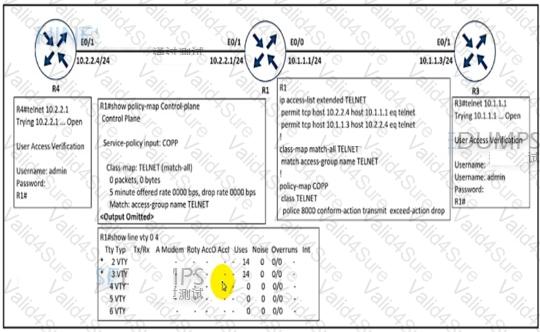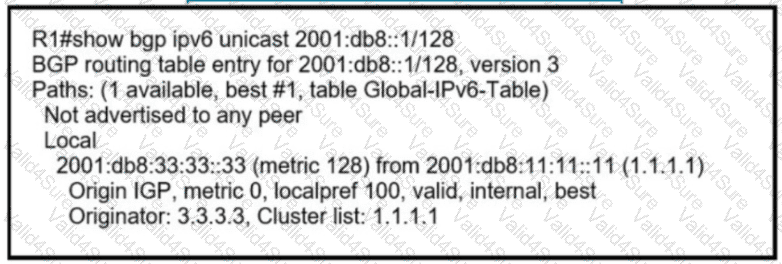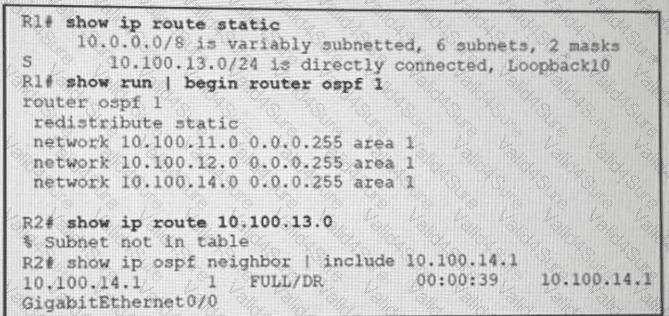300-410 Exam Dumps - Implementing Cisco Enterprise Advanced Routing and Services (300-410 ENARSI)
Refer to the exhibit.

R1 has a route map configured, which results in a loss of partial IPv6 prefixes for the BGP neighbor, resulting in service degradation. How can the full service be restored?
Refer to the exhibit.

With the partial configuration of a router-on-a-stick. Clients in VLAN 10 on Gi2 cannot obtain IP configuration from the central DHP server is reachable by a successful ping from the route. Which action resolves the issue?
Refer to the exhibit.

An engineer implemented CoPP to limit Telnet traffic to protect the router CPU. It was noticed that the Telnet traffic did not pass through CoPP Which configuration resolves the issue?


Refer to the exhibit. An engineer examines the BGP update for the IPv6 prefix 2001:db8::1/128. which should have been summarized into a /64 prefix. Which sequence of actions achieves the summarization?
:583

Refer to the exhibit. R1 is directly connected to R2 over network 10.100.14.0/24. An engineer configures R1 to advertise a static route that is connected to a local loopback for network 10.100.13.0/24. The network is not in the routing table of R2. Which action resolves the issue?